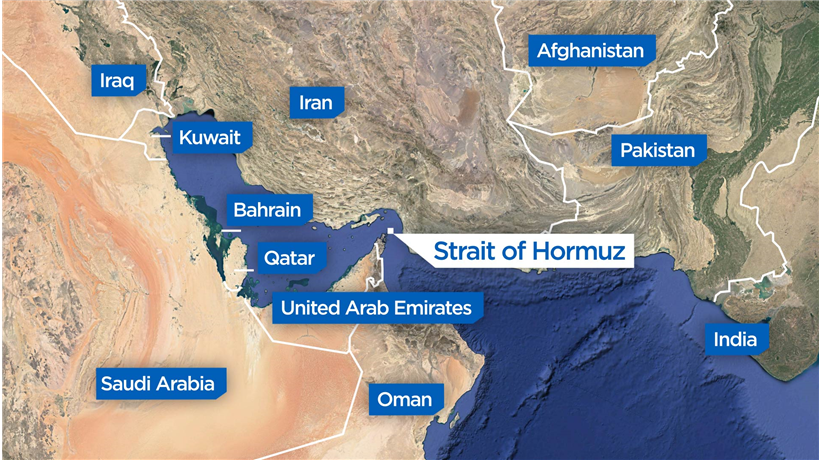Iran’s ambassador to Britain warned against escalating tensions on Sunday, a day ahead of an expected response from the U.K. which could include fresh sanctions on Tehran or other steps after its seizure of a British-flagged oil tanker.

Britain has called the capture of the Stena Impero in the Strait of Hormuz on Friday a “hostile act”.
Below are details about the Strait:
What is the Strait of Hormuz?
The strait lies between Oman and Iran. It links the Gulf with the Gulf of Oman to the south and the Arabian Sea beyond.
It is 33 km wide at its narrowest point, with the shipping lane just two miles (3 km) wide in either direction.
The UAE and Saudi Arabia have sought to find other routes to bypass the Strait, including building pipelines.
WATCH: Seized British tanker seen with Iranian flag hoisted atop

Why does it matter?

Get daily National news
Almost a fifth of the world’s oil passes through the Strait — some 17.4 million barrels per day (bpd) versus consumption of about 100 million bpd in 2018, data from analytics firm Vortexa showed.
OPEC members Saudi Arabia, Iran, the UAE, Kuwait and Iraq export most of their crude via the Strait. Qatar, the world’s biggest liquefied natural gas (LNG) exporter, sends almost all of its LNG through the Strait.
WATCH: Iranian foreign minister says there is ‘destabilization’ wherever U.S. is present

Political tensions
The United States has imposed sanctions on Iran aimed at halting its oil exports. U.S. waivers which had allowed continued sales of Iranian oil to eight countries — China, Greece, India, Italy, Japan, South Korea, Taiwan and Turkey — expired on May 2.
Iran has threatened to disrupt oil shipments through the Strait of Hormuz if the United States tries to strangle its economy. The U.S. Fifth Fleet, based in Bahrain, is tasked with protecting commercial shipping in the region.
WATCH: Trump says possible seizure of British tanker by Iran shows they’re ‘nothing but trouble’

Major past incidents
- 1980-1988 – During the Iran-Iraq war, the two sides seek to disrupt each other’s oil exports in what is known as the Tanker War
- July 1988 – U.S. warship Vincennes shoots down an Iranian airliner, killing all 290 aboard, in what Washington says was an accident and Tehran says is a deliberate attack
- Early 2008 – The United States says Iranian vessels threaten three U.S. Navy ships in the Strait
- July 2010 – Japanese oil tanker M Star is attacked in the Strait – a group called Abdullah Azzam Brigades linked to al Qaeda claims responsibility
- January 2012 – Iran threatens to block the Strait in retaliation for U.S. and European sanctions aimed at curbing Tehran’s nuclear program
- May 2015 – Iranian ships seize a container ship in the Strait and fire shots at a Singapore-flagged tanker which Iran says damaged an oil platform
- July 2018 – President Hassan Rouhani hints Iran could disrupt oil trade through the Strait in response to U.S. calls to reduce Iran’s oil exports to zero
- May 2019 – Four ships, including two Saudi oil tankers, are attacked in the Gulf just outside the Strait. U.S. officials blame Iran, Tehran denies the charges
- June 2019 – Two tankers are attacked south of the Strait which Washington blames on Iran and Tehran denies
- June 2019 – Iran shoots down a U.S. drone
- July 2019 – The USS Boxer destroys an Iranian drone in the Strait after it threatens the U.S. Navy ship but Iran denies it has lost a drone
- July 2019 – Iran seizes British-operated oil tanker Stena Impero in the Strait
WATCH: U.S. and Iran’s rocky history explained in five minutes
Sources: Reuters/Refinitiv/Energy Information Administration







Comments